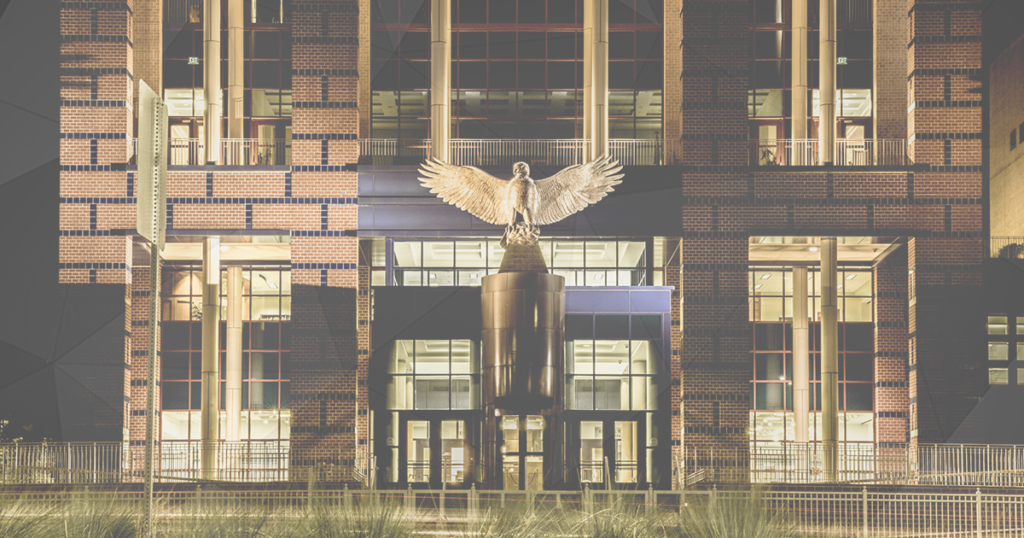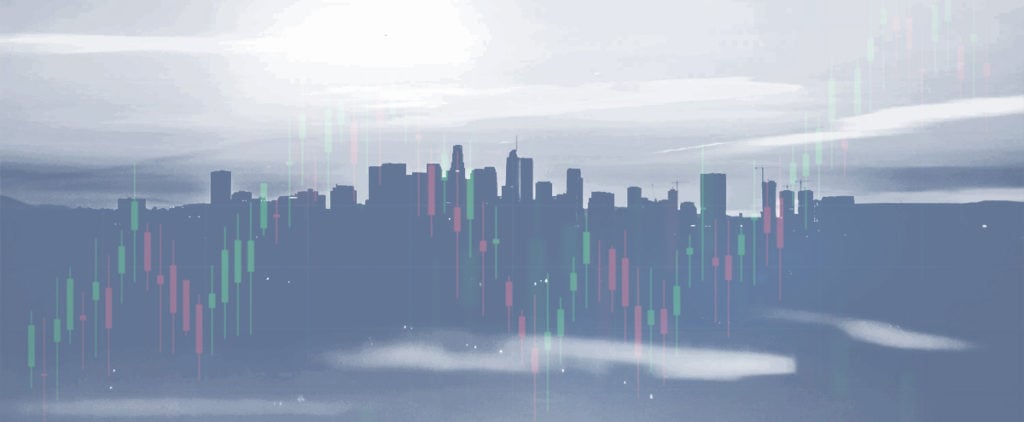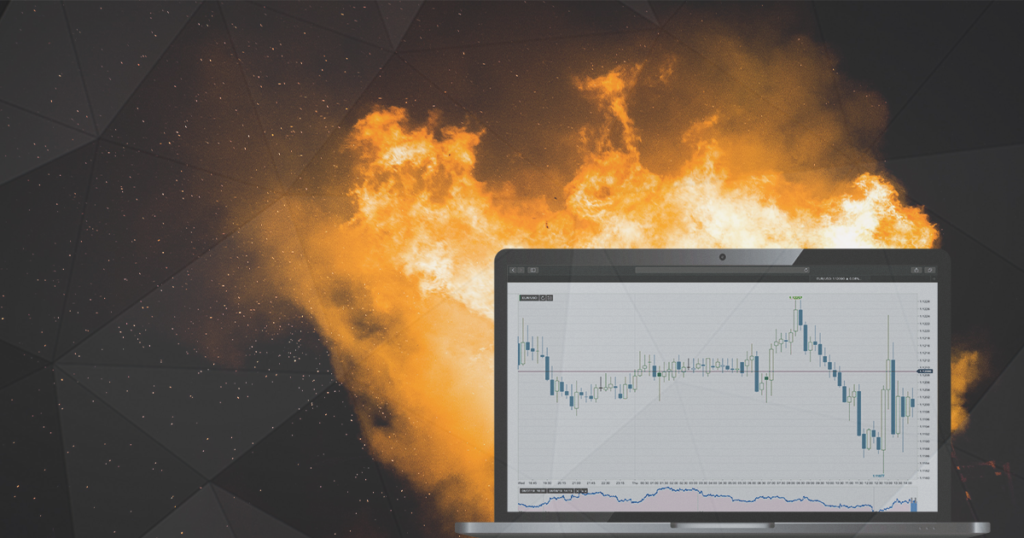7 Facts About the Federal Reserve

The Federal Reserve is the central bank of the United States and arguably the most influential central bank in the world.
Just like other major central banks, the Federal Reserve’s main task is to provide safety and stability to the US monetary and financial system.
Most of the time, news outlets will call the Federal Reserve simply the Fed.
What Does the Fed Do?
The Fed’s obligations include conducting monetary policy, regulating the country’s banking sector, providing banking services, and supervising the financial system. Through its actions, the Fed wants to keep inflation rates stable and low, promote economic growth, and ensure maximum employment.
Market participants closely follow every Fed meeting as it can provide clues about the future monetary policy of the United States. In their decisions, the Fed is considered completely independent because the Fed’s actions don’t have to be ratified by the US government.
Nevertheless, the central bank has to work within a framework that describes the economic and fiscal objectives of the government.
The Fed collects interest income from a range of sources, including US treasury bonds that it bought through its operations, foreign currency investments, fees for funds transfers, and interest on loans to depository institutions.
Check it Out: 34 Forex Abbreviations YouCan Refer to in Future
Brief History of the Fed
Following severe financial panics in the early 20th century that led to a series of business bankruptcies and bank failures, the US Congress decided to create an institution that would help prevent those financial disruptions. The Fed was founded in 1913 by the US Congress and signed into law by President Woodrow Wilson.
The Federal Reserve Act of 1913 also established the 12 regional Federal Reserve branches, with the New York Fed still considered the most powerful of them.
The Fed was organised to consist of a Board of Governors and the Federal Open Market Committee, also called the FOMC. Interestingly, the Federal Reserve Act also established the US dollar as the official currency of the United States, as we know it today.
Here’re some interesting facts about the Federal Reserve:
Fact #1: The Fed is one of the most influential central banks
The Fed has many important responsibilities to ensure the smooth operation of the US economy. It targets price stability, economic growth, and maximum employment, and even processes payments such as Social Security. The Fed has been around for more than 100 years and represents the central bank of the largest economy in the world, so it’s no wonder that the Fed is arguably the most influential central bank in the world.
Any comments made by the Fed’s Governor are scrutinised by investors around the world, as changes in the US monetary policy can have profound implications on the rest of the world.
In addition, changes in the currency can also increase the liability of countries that have debt repayments denominated in US dollars.
Through its actions and operations, the Fed can influence the value of the US dollar against other major currencies. A rise in interest rates, for example, often leads to increased capital flows to the United States and increased demand for the dollar.
Fact #2: There are many Federal Reserve Banks
The Federal Reserve System is made up of 12 regional Federal Reserve banks, with the main headquarter located in Washington, D.C.
The regional Fed branches extend around the United States and are based in Boston, New York, Philadelphia, Cleveland, Richmond, Chicago, St. Louis, Atlanta, Kansas City, San Francisco, Minneapolis, and Dallas.
While each regional Fed branch oversees operations on its own location, the New York Fed is considered the most influential regional bank as it implements the decisions of the FOMC.
The following map shows the locations of the regional Federal Reserve branches, with the headquarter in Washington D.C.

Source: St. Louis Fed
The entire network of the 12 Federal Reserve branches is under the oversight of the Board of Governors. The regional branches only act as the operating arm of the central bank and provide an important regional perspective to the Fed System.
Fact #3: The Fed has three main goals
The Federal Reserve’s main purpose is to keep inflationary pressures under control, promote maximum employment, and support economic growth. The main tool of the Fed to achieve those goals comes from adjusting interest rates. When the economy shows signs of weakness and inflation rates start to fall below the Fed’s target (which is usually around 2%), the Fed can lower interest rates to promote spending, investing, and economic growth.
Similarly, when the economy is doing well and inflation rates start to rise above the Fed’s target, the central bank can hike interest rates. This makes borrowing more expensive, reduces economic activity, and puts downward pressure on the increase in prices. Besides interest rates, the Fed can also engage in Quantitative Easing, which essentially means buying government securities and increasing the money supply in the system.
Fact #4: The Fed doesn’t create money
Unlike most people would believe, the Fed doesn’t have any power over the creation of money. While the central bank can (and does) influence money supply, actual money is printed by the U.S. Treasury.
Founded in 1789, the US Treasury oversees the US Mint and the Bureau of Engraving and Printing that are responsible for printing all paper currency and coins in the US. The job of the US Treasury is to put the money in the domestic fiscal system.
Money creation lies in the hands of private banks when making loans. Although the Fed doesn’t directly control loans issued by private banks, the central bank can influence the process of money creation with changes in interest rates (lower interest rates stimulate borrowing, while higher interest rates restrict it) and changes in bank reserves (the amount of money private banks need to hold as reserve requirements).
Fact #5: The FOMC is responsible for monetary policy
There is often confusion when it comes to the Fed’s role in determining monetary policy. The Fed’s Board of Governors is not directly responsible for the country’s monetary policy. The Board sets reserve requirements for private banks, which is the amount of money that banks are required to keep in reserve in order to be able to meet a sudden spike in withdrawals.
In addition, the Fed’s Board of Governors sets the discount rate, which is the rate that the Fed charges on overnight loans made to banks and other financial institutions to help them meet minimum reserve requirements. That’s why the Fed is also called the lender of last resort. The FOMC, or Federal Open Market Committee, is the Fed’s monetary policy-making body. The FOMC is responsible to conduct open market operations such as the buying and selling of government bonds.
The FOMC consists of the Board of Governors, the president of the Federal Reserve Bank of New York, and the presidents of four other Fed branches who rotate on a regular basis. The Federal Reserve Bank of New York is responsible to implement the open market decisions of the FOMC.
Fact #6: Fed’s meetings matter to investors
As noted earlier, meetings of the Fed’s Board of Governors can have a significant impact on the financial markets. Changes in interest rates have an immediate effect on the value of the US dollar and major financial markets as investors try to anticipate the implications of those changes.
While the Fed’s Board holds regular meetings, typically every other Monday, markets are especially interested in FOMC meetings. The FOMC holds eight regularly scheduled meetings per year, where the Committee reviews and analyses current economic reports and conditions in order to determine the appropriate monetary policy.
As a reminder, the main goal of monetary policy is to keep inflation stable, ensure maximum employment, and promote economic growth. The first two goals are also known as the Fed’s Dual Mandate.
Read: The Savvy Trader’s to Major Forex News
Fact #7: Follow the Fed on social media
Just like other major central banks around the world, the Fed regularly communicates its decisions through social media. The Fed has its own Twitter account and YouTube account, and the Fed’s Board of Governors also has a dedicated Facebook Page.
If you’re trading the markets, you can follow important Monetary Policy Committee meetings on YouTube live and analyse how their remarks influence the markets in real-time.
Here are the links:
Fed Twitter: https://twitter.com/federalreserve
Fed Board of Governors Facebook Page: https://www.facebook.com/federalreserve
Fed’s YouTube Channel: https://www.youtube.com/channel/UCAzhpt9DmG6PnHXjmJTvRGQ
Final Words
The Federal Reserve, popularly called the Fed, is the central bank of the United States and arguably the most influential central bank in the world. It was founded in 1913 by the Federal Reserve Act after a series of financial panics and bank failures hit the country in the early 20th century.
If you’re interested in the work of the Fed and its monetary policy-making body, the FOMC, make sure to follow their official social media accounts to stay up-to-date on all important Fed decisions.





